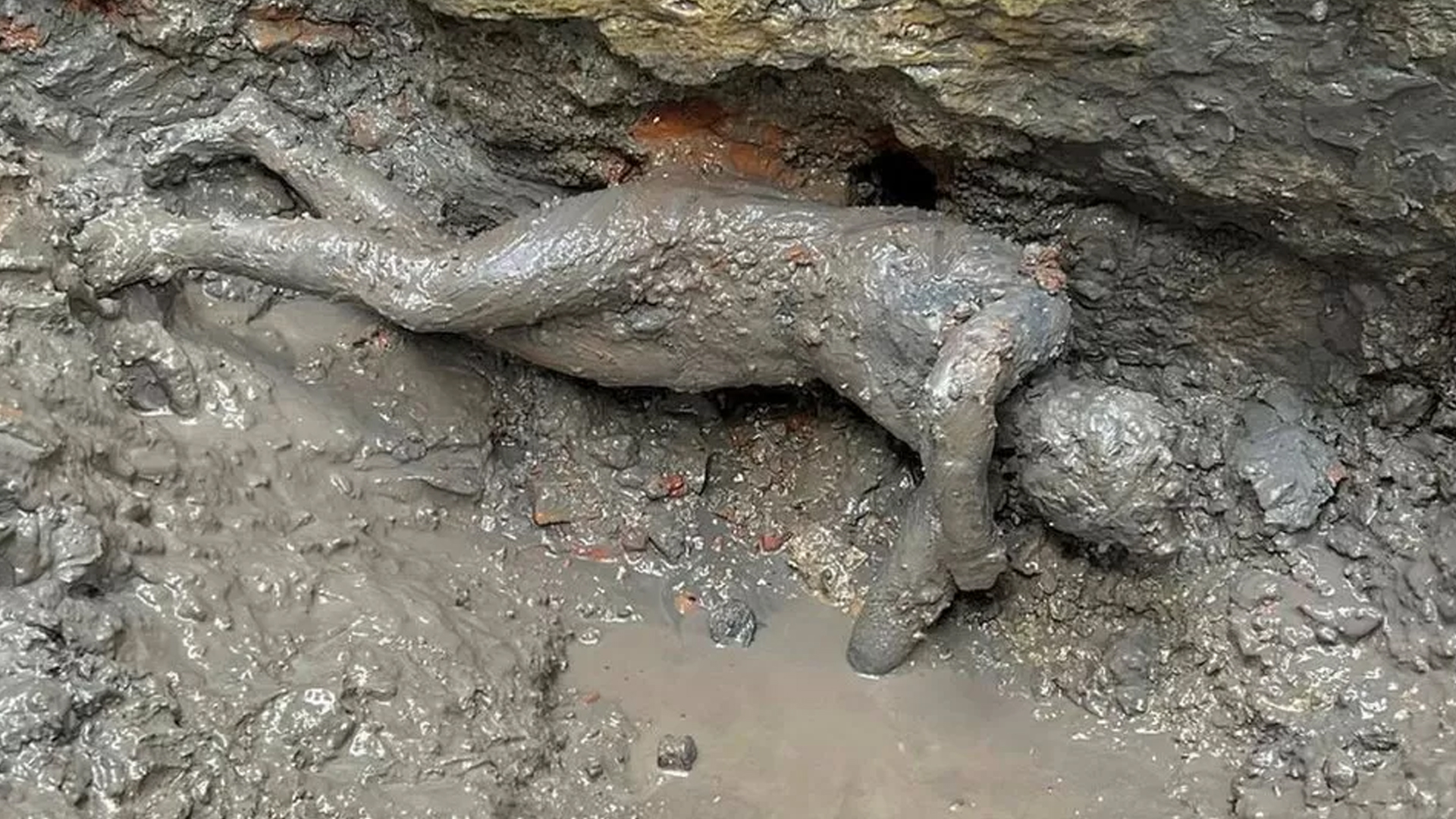The 2,000-year-old statues change our understanding of the end of the Etruscan civilization
Italy’s Ministry of Culture on Tuesday announced the discovery of 2,000-year-old bronze statues at an ancient, sacred thermal spring in Tuscany. Archaeologists say the find could rewrite the history of the transition from the Etruscan civilization to the Roman Empire in today’s central Italy.
The more than 20 bronze statues were found in an ancient thermal bathhouse in San Casciano dei Bagni, a small town in Tuscany located roughly 100 miles north of Rome. Archaeologists have been digging at this site since 2019. The find is considered to be one of the most important since the 1972 discovery of the Riace Warriors, full-sized Greek bronze statues discovered in southern Italy, according to NBC News. “It is certainly one of the most significant bronzes ever found in the history of the ancient Mediterranean,” said Massimo Osanna, the director general of museums at the Culture Ministry.
Because the statues were encased in a protective layer of mud, they were unearthed in a near-perfect state of preservation. Alongside the figurines, 5,000 coins in gold, silver, and bronze were also found, according to the AP. The statues, which depict various Greco-Roman divinities including Apollo and Hygieia, and bear both Latin and Etruscan inscriptions, date from the second century B.C. and the first century A.D., a transformative period in Tuscany’s ancient history.
The area used to be inhabited by the Etruscans, one of several ancient people who lived in the Italian peninsula before the Latin-speaking Romans came to power. The statues date to the period in which the Etruscans were being forcibly assimilated into the Romans’ growing sphere of influence after centuries of territorial warfare. The Tuscan hot springs where the statues were found were established first by the Etruscans and later renovated by the ancient Romans. The discovery sheds light on the end of the Etruscan civilization and the simultaneous expansion of the Roman Empire in central Italy, according to the AP.
The find is exceptional not only because of the remarkable state of preservation, but also because the statues are made out of bronze, which was rare for that time period. Many statues at the time were made from terracotta, according to Reuters. The figurines have been taken to a restoration laboratory nearby and will eventually be put on display in a new museum in San Casciano.
Asia London Palomba
Asia London Palomba is a trilingual freelance journalist from Rome, Italy, currently pursuing her master's in journalism at New York University (NYU). In the past, her work on culture, travel, and history has been published in The Boston Globe, Atlas Obscura, and The Christian Science Monitor. In her free time, Asia enjoys traveling home to Italy to spend time with family and friends, drinking Hugo Spritzes, and making her nonna's homemade cavatelli.

